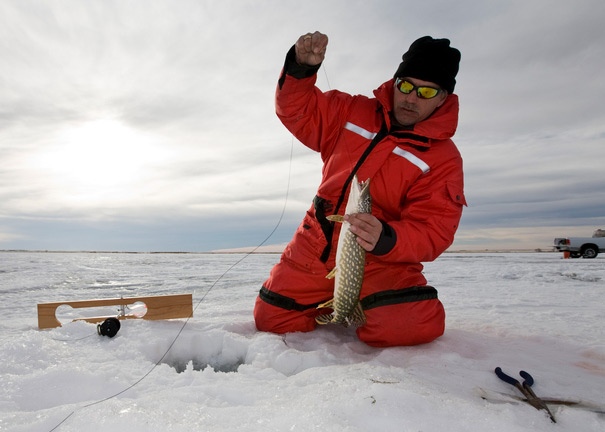Embracing the winter chill often leads outdoor enthusiasts to frozen lakes and ponds, igniting a flurry of activities like ice skating, hockey, and ice fishing. However, traversing icy surfaces demands caution and awareness of safety measures. Learn how to assess ice thickness effectively to ensure safe winter adventures.
Ice Safety Fundamentals: It’s crucial to recognize that ice conditions are inherently unpredictable. Factors like varying thickness, snow cover, and local currents contribute to the stability of ice surfaces. To navigate safely, heed these essential ice safety guidelines:
- Temperature Tracking: Monitor temperature trends using an AcuRite personal weather station to gauge ice formation accurately. Remember, it typically requires at least four consecutive days of sub-zero temperatures for ice to become safe for walking, devoid of currents.
- Seek Local Insights: Consult local experts and ice reports for up-to-date information on ice conditions and potential hazards.
- Inform Others: Prior to venturing onto the ice, inform someone of your whereabouts and anticipated return time. Carry a cellphone for emergency communication.
- Portable Weather Monitoring: Equip yourself with a portable weather device to monitor changing weather conditions while outdoors.
- Regular Ice Thickness Checks: Conduct ice thickness assessments approximately every 150 feet to ensure uniform safety.
- Caution on Snow-Covered Ice: Exercise extra vigilance on snow-covered ice due to its insulating effect, which delays freezing and reduces weight-bearing capacity. Additionally, snow obscures visual cues for ice strength.
Guidelines for Safe Ice Thickness: Understanding the minimum ice thickness required for various activities is vital for ensuring safety. Follow these general recommendations:
- Less than 4 inches: Avoid venturing onto the ice.
- 4 inches: Safe for walking, ice fishing, and other foot activities.
- 5 to 7 inches: Suitable for snowmobiling or ATV riding.
- 8 to 12 inches: Adequate for driving a car or small pickup truck.
- 12 to 15 inches: Safe for driving a medium-sized truck.

Visual Indicators for Ice Safety: While ice thickness serves as a fundamental indicator, visual cues also play a crucial role in assessing ice strength:
- Clear or new ice is the strongest type. If the ice appears white, cloudy, or milky, exercise caution and double safety measurements.
- Ice with slush indicates potential instability, suggesting insufficient freezing from beneath.
- Avoid areas with debris or logs protruding from the ice.
- Be wary of cracks, which can weaken surrounding ice, particularly after periods of warmer weather.
Prioritize safety when embarking on winter adventures by adhering to recommended ice thickness guidelines and heeding visual cues. Stay informed, equipped, and vigilant to ensure a memorable and safe outdoor experience amidst the winter wonderland.
For more winter escapades, explore our blog for tips on cold-weather camping, snowboarding, skiing, and creating backyard ice rinks for family enjoyment. Whether you’re an avid explorer or a casual adventurer, preparation and awareness are key to enjoying winter’s wonders responsibly.
Image/Source: Acurite





